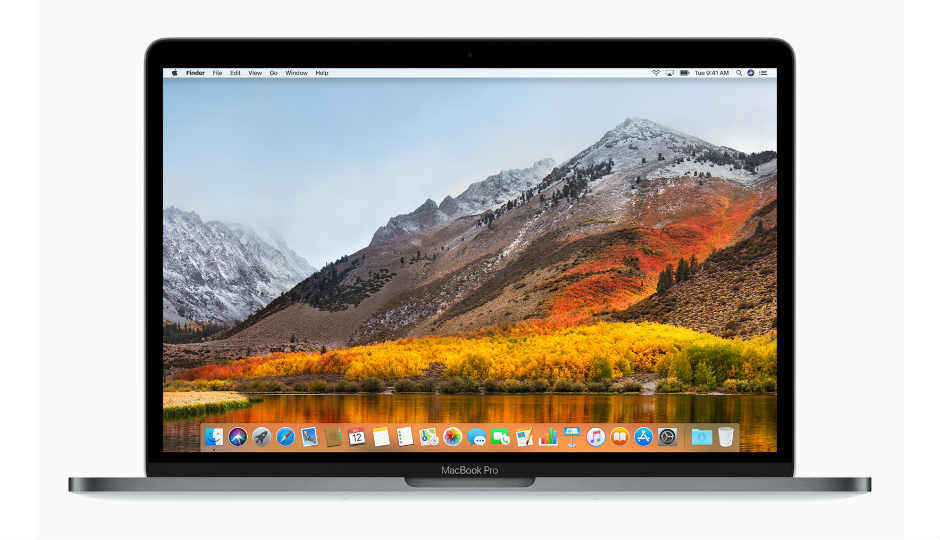Apple releases macOS High Sierra: All you need to know
Apple has made its latest desktop and laptop operating system available for download. Here are all the feature additions and improvements you get with the macOS High Sierra update

Apple has made its latest desktop operating system available for download. Called macOS High Sierra 10.13, the software upgrade brings a host of new features including the new new Apple File System for Macs with SSDs (APFS), Safari 11, iCloud file sharing, update to Photos app and more.
 Survey
SurveyAs the name suggests, High Sierra brings small noticeable changes for Mac owners, but makes a bunch of under-the-hood improvements to ensure better performance. Mac desktop and laptop users can now upgrade to the new macOS 10.13 for free. All Macs launched in mid 2010 or later can upgrade to the new software.
To download High Sierra, users need to head to the App Store on their Macs and download the High Sierra installer to initiate the update.
Apple File System (APFS)
APFS is currently available only for Macs with an all-flash storage built in. Currently, Fusion drives cannot be converted to APFS, as per an Apple support document released last week. However, Apple Software Engineering Chief, Craig Federighi, has confirmed that the update will come to Fusion drives later.
The Apple File System (APFS) is an upgrade to Apple’s HFS+ file system which has been in use since 1998. It was rolled out to iOS devices with the release of the software version 10.3. It is built keeping latency in mind and offers crash protection, strong file encryption, support for 64-bit inode number, easier backups, instantaneous file copying, better navigation for common tasks, and more.
HEVC and HEIF Media File Formats
With High Sierra, Apple is introducing new formats for photos and videos, designed to save space on Macs. The HEVC format for Videos and HEIF for photos is built to retain quality of the media files, while file sizes remain comparatively small, saving precious disk space. The formats are already supported by iPhone 7, iPhone 7 Plus, iPhone 8, iPhone X and the 2017 iPad Pros, so it only makes sense to include them with the new macOS update.
Safari 11
Mac users can experience Safari 11 with the new High Sierra update. However, it is not necessary to upgrade to macOS High Sierra to get Safari 11. The browser can be updated without installing the new OS as well.
Safari 11 allows users to customise settings for individual websites and save these custom settings for future use. These can be accessed by right-clicking on the URL of a website and selecting the ‘Settings for This Website’ option. The same can also be accessed from the Preferences tab in Safari. These custom settings include controls for enabling ad blockers, using Reader, setting page zoom, auto-playing media, setting camera permissions and more. Once set, these settings will be saved for each time you visit that particular website.
Apple has also added Intelligent Tracking Prevention (ITP) to Safari 11. ITP uses machine learning to block third-party cookie trackers to improve user privacy.
Photos App
With the new macOS High Sierra, users will notice a bunch of improvements to the native Photos app on Macs. This is one of the most noticeable changes that the software update brings with it. The Photos App will now display a sidebar which will serve as the main navigational area instead of the top tabs that Apple used earlier. The sidebar will display five sections: Library, Devices, Shared, Albums, and Projects.
A toolbar on top of the screen will allow users to toggle between different editing sidebars, making for a clutter-free interface. There are also new tools to edit Live Photos and users will be able to select a static image called ‘Key Photo’ to represent a Live Photo, along with the ability to trim, apply effects, mute clips and more.
Users will also be able to launch third-party photo editing apps like Luminar, Aurora HDR and more straight from the native Photos app. The images edited using third-party apps will be stored right back into the main Photos library.
Metal 2
Metal 2 is Apple’s advanced graphics technology which helps enable machine learning used in speech recognition, natural language processing and computer vision. Metal 2 combined with Thunderbolt 3 will allow Mac users to take advantage of powerful external GPUs.
Virtual Reality
macOS High Sierra will allow Mac users to experience VR content. Apple is working with developers to create VR games, and other content, which will come to Macs later this year. Valve is optimizing its SteamVR platform for macOS and enabling connection of the HTC Vive headset, while Unity and Epic are bringing their VR development tools to macOS, says the company.